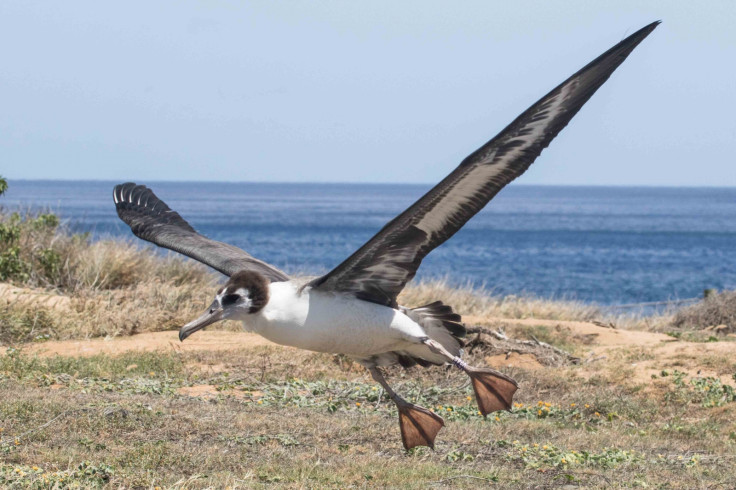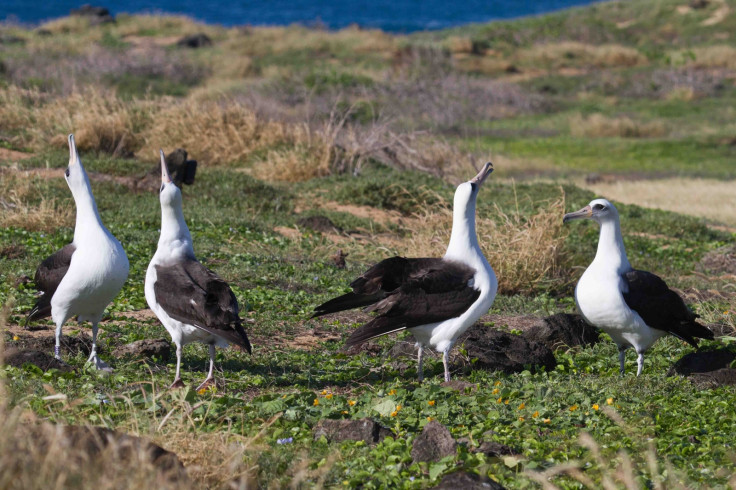Albatrosses' mysterious early years have been caught on camera
Understanding the habits of young albatrosses will help conservation efforts.
Two ornithologists have found out how the Laysan albatross spends first few years of life by studying a colony in Hawaii for over 14 years. Their findings overturn the established view that albatrosses remain at sea until they are ready to breed.

In fact, young albatrosses return to the colony for the first time after one, two or three years, the researchers found. Eric VanderWerf and Lindsay Young of Pacific Rim Conservation in Hawaii told IBTimes UK that they did not expect to see albatrosses returning to their colonies many years before they reach sexual maturity.
"We were quite surprised at that. When you have something that goes against the grain that much, you double-check to make sure you're not wrong," said Young.
Young and VanderWerf captured images of the young albatrosses returning early to their colony to make sure they weren't making a mistake. The team tracked the albatrosses by catching and tagging them, so they could follow their progress with binoculars and cameras in later years. Catching an albatross is not as hard as it might sound, Young says. "Albatrosses – at least this species – are not afraid of people. You can literally walk up to them and grab them."
Albatrosses typically reach breeding age at about seven or eight-years-old, the researchers say, and can continue to breed for decades. The oldest recorded albatross mother is still successfully hatching chicks well into her seventh decade.

The research, published in the journal The Condor: Ornithological applications, will help conservationists understand albatross behaviour better in order to protect the species more efficiently. Long-term studies such as this don't come along very often, VenderWerf says, but they are crucial for effective conservation.
For the first time they were able to accurately estimate that about half of the colony were of breeding age. This is a positive step for the conservation of albatrosses. "It's actually good news because we can estimate the proportion of the colony that is of breeding age now that we have a much better understanding of how to count them," says Young.

© Copyright IBTimes 2024. All rights reserved.







